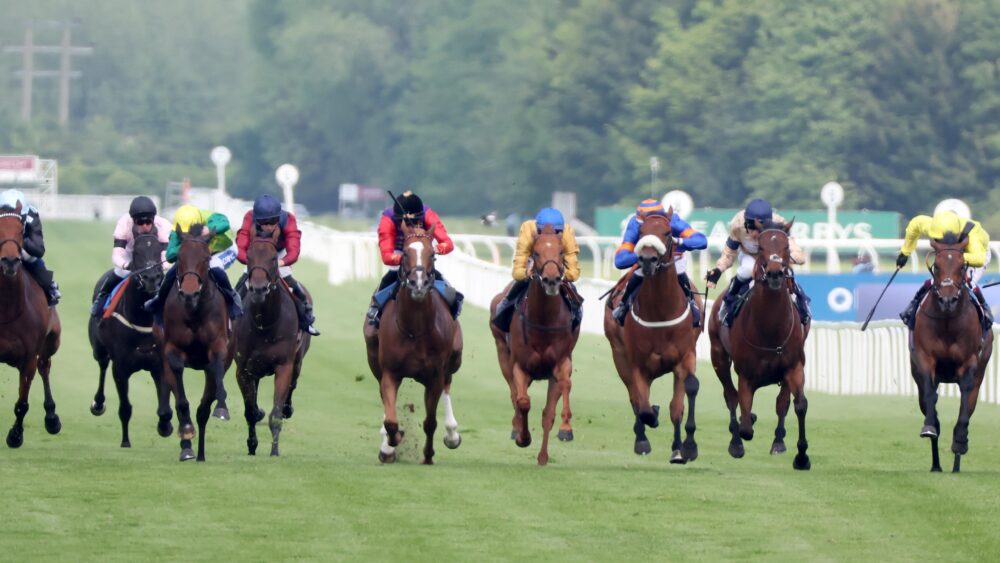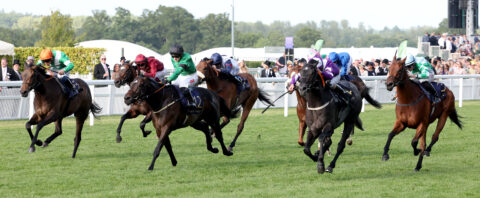Racing report: first half of 2024

By Richard Wayman, BHA Director of Racing
At the beginning of 2024, we started a two-year trial of various fixture list initiatives with the overarching aim of increasing racing’s appeal to customers, both existing and new.
The changes can be summarised under three main headings:
– Create a more readily identifiable top end of the sport and make use of our biggest events to grow racing’s appeal.
– Grow the value of Sundays through improved quality and creating a new fixture session.
– Improve race competitiveness at all levels to boost customer appeal.
Over the course of the trial, we are providing regular updates on how things are going. This includes a monthly blog in which we summarise sporting performance – measurements relating to competitiveness and race volume, prize money, horse population, race times and handicapping. At the end of each quarter, we provide a wider report that also includes more customer-focused numbers, such as racegoers and bettors.
One of the challenges in producing these updates is that there are many factors that will be impacting our sport beyond the changes to the fixture list that form part of this trial. However, it is important that we try to measure our initiatives as well as we can, so that we can best shape future fixture lists beyond the trial.
Sporting performance
This area of data is calculated at the end of each day’s racing and therefore, unlike the rest of this blog which covers the first half of 2024, analysis for the first seven months of the year is already available.
Premier Racedays were created so that there is a more readily identifiable top end of the sport and to make use of these headline fixtures to grow racing’s appeal. That has involved both the Horserace Betting Levy Board (HBLB) and racecourses making significant investment in the prize money at these meetings, which in total is up by £9.1m compared with 2023. It should be acknowledged that total prize money at all other meetings, sometimes referred to as Core fixtures, has fallen by £4.9m, meaning an overall increase of £4.2m.
The extra rewards and incentives at our biggest fixtures have supported increased runners at Premier racedays on the Flat, with average field sizes having grown to 10.95 in 2024, up from 10.62 in 2023 and 10.25 in 2022.

Field sizes at Premier racedays over Jumps were impacted by ground conditions from January to April, when 71% of all Jump races were run on soft or heavy ground, compared with 39% in 2023 and 36% in 2022. As a consequence, field sizes at Jump Premier racedays have averaged 9.97 – lower than the 10.32 in 2023 but better than the 9.32 in 2022.
Another aim has been to improve race competitiveness across the entire fixture list to boost the sport’s customer appeal. On the Flat, total race volume remains unchanged, but some races were moved from summer to autumn. More races are dividing, however, and so in total, five more Flat races have been staged so far this year. Combined with the effect of race planning changes, the average field sizes at Core meetings have increased to 8.84, up from 8.62 in 2023 and 8.38 in 2022.
Over obstacles, 300 races were removed from the programme this year and, so far, 174 fewer Jump races have been staged. Despite the difficult ground conditions during the first four months of the year, average Jump field sizes at Core meetings have risen to 8.49, up from 7.98 in 2023 and 7.38 in 2022.
Looking at the horse population, the latest numbers show that total horses in training are basically holding steady, down by 17, or 0.1%, compared with the same stage in 2023.
Focussing on higher quality horses, the number of Flat horses rated 85 or above that have run at least once in Britain is slightly down on last year, with 26, or 1.9%, fewer horses appearing.
The equivalent number over Jumps for horses rated 130 or above, however, has declined much more steeply, by 73, or 14%. Whilst there are a number of factors contributing to this decline – including changes to the chase and hurdle handicap ratings files, the increased concentration of higher rated horses with a small number of trainers, and ground conditions – this trend remains the most concerning within the sporting performance headlines. As you would expect, efforts are continuing to identify interventions that would slow and, ultimately, reverse this trend.
Racecourse attendances
The number of people coming racing is something that’s been discussed a great deal, especially as many across our country continue to struggle with higher living costs.
Overall attendances remain under pressure, with total attendances in the first six months of the year down by 1.9% from 2.359m in 2023 to 2.314m in 2024. However, there has been a 3.7% reduction in the number of fixtures run, large which means the average attendance has increased by 1.9%.
Premier racedays have attracted total attendances of 1.103m, up from 1.095m at the same meetings in 2023. To provide a like-for-like comparison, focussing on the 72 fixtures that took place in both years, the average attendance has fallen by 1.4%. Attendances at Core fixtures have fallen in total by 4.2%, from 1.264m to 1.211m. However, with 28 fewer fixtures staged, the average attendance at Core fixtures has increased by 0.2%.
As for viewing figures, having dipped in 2022, they have been recovering since, with a particular increase in year-on-year audiences evident since Q4 last year. The first half of this year shows a mixed picture compared with the same period last year, with average audiences up by 3% on ITV1 but down 8% on ITV4. The impact of other sports, especially the Euros, particularly impacted June. The first five months of the year had experienced a 11% increase on ITV1 and a 7% decline on ITV4.
Betting Performance
As reported at the end of Q1, betting on racing remains under pressure. The average betting turnover per race in the first half of the year has fallen by 6.1% compared with the same period in 2023. This comprises a total reduction in turnover of 9.7% across 3.8% fewer races.
As mentioned above, this decline is being driven by factors beyond the fixture list, most notably the continuing impact of affordability checks, as well as reduced concessional activity from the bookmakers and the general economic climate. The betting companies have suggested that racing’s performance is not out of line with the general betting landscape, thereby pointing to the significance of the compliance checks rather than issues specific to racing itself.
Nevertheless, it remains important that we seek to assess the impact of the fixture list changes themselves. Betting turnover per fixture at Core meetings has fallen by 7.6%. The performance at Premier racedays varies significantly depending on the type of fixture. For example, at the major festivals – including the Cheltenham Festival meeting, the Grand National meeting, the Derby meeting and Royal Ascot, the average decline in turnover per fixture is 12.4%. There are a number of contributory factors behind including fewer offers, the Grand National’s earlier start time and clashes with other sporting events, especially the Euros.
The performance at other Premier racedays is better, with the decline in turnover per fixtures on non-festival Saturdays at 2.9%. The sample size is still too small to quantify the impact of the protected window on those Saturdays when it has been in operation, but spreading races across the day is showing some benefits. At the same time, the total impact on attendances at moved fixtures is a decline of around 10,000, albeit performance varying significantly from fixture to fixture but, on average, down by 17%. As more Saturdays with the protected window take place, we should be able to better quantify the various upsides and downsides so that we can take an overall view on the merits of this element of the trial.
Premier racedays on Sundays are performing relatively strongly. There are seven Sundays fixtures that existed in 2023 and, following an increase in prize money levels, have been upgraded to Premier racedays in 2024. The average turnover per fixture at these meetings has increased by 24%.
Published targets
In November 2023, we published 12 targets for the two-year trial. These comprise a combination of measures, some of which were specific to 2024 and others which covered the entirety of the two-year trial period.
At this stage, it is possible to update on nine of the 12, with three of the targets being based around longer-term timescales. It is still relatively early days but a summary of the nine targets is provided below.
Target 2
Total betting turnover on Sunday evening fixtures to outperform midweek (Tuesday to Thursday) floodlit fixtures by 15 to 20%.
Not achieved – Total digital turnover averaged 3.6% higher than midweek floodlit fixtures across the six fixtures.
Target 3
Slowing the decline in betting across the entire fixture list compared with 2023, with Premier racedays showing 1-2% better relative performance than the remainder of the fixture list.
Premier racedays – excluding major Festivals and meetings with no comparable fixture in 2023 – currently outperforming Core meetings by 0.7%.
Target 4
To halt the decline in total attendances at Premier racedays in 2024, and then increasing by 5-10% in 2025 versus 2023.
To provide a like-for-like comparison, the average attendance at Premier racedays staged in both 2023 and 2024 is currently down by 1.4%.
Target 5
For Saturday attendances to have largely recovered by 2025.
For the first 25 Saturdays of the year, attendances (721k) were down by 4.5% but there were 6 fewer fixtures staged, including the loss through abandonment of several high attendance fixtures.
Target 6
Recognising the impact on those streaming, watching the racing channels or for customers in betting shop, the target is to reduce the number of clashing races (defined as a British or Irish race running into a British race) on Saturdays afternoons (up to 5pm) in 2024 from over 8% to 5%.
Up to the end of July, the number of clashes on Saturday afternoon has fallen from 8.3% to 6.9% of all races.
Target 9
Total prize money at Premier racedays to increase by £6-7m in 2024 and for total prize money at the remainder of the fixture list to return to close to their current levels by 2025.
At the end of July, total prize money at Premier racedays has increased by £9.1m.
Target 10
To grow average field sizes at Premier and Core fixtures in 2024, both Flat and Jump, compared with 2023.
Increases in average field sizes at all fixture types other than Jump Premier racedays.
Target 11
To grow the percentage of races with 8+ runners at Premier and Core fixtures in 2024, both Flat and Jump, compared with 2023.
Increases in percentage of races with 8+ runners at all fixture types other than Jump Premier racedays.
Target 12
To grow the percentage of races with an odds-against favourite at Premier and Core fixtures in 2024, both Flat and Jump, compared with 2023.
Increases in percentage of races with an odds-against favourite at all fixture types other than Jump Premier racedays.
